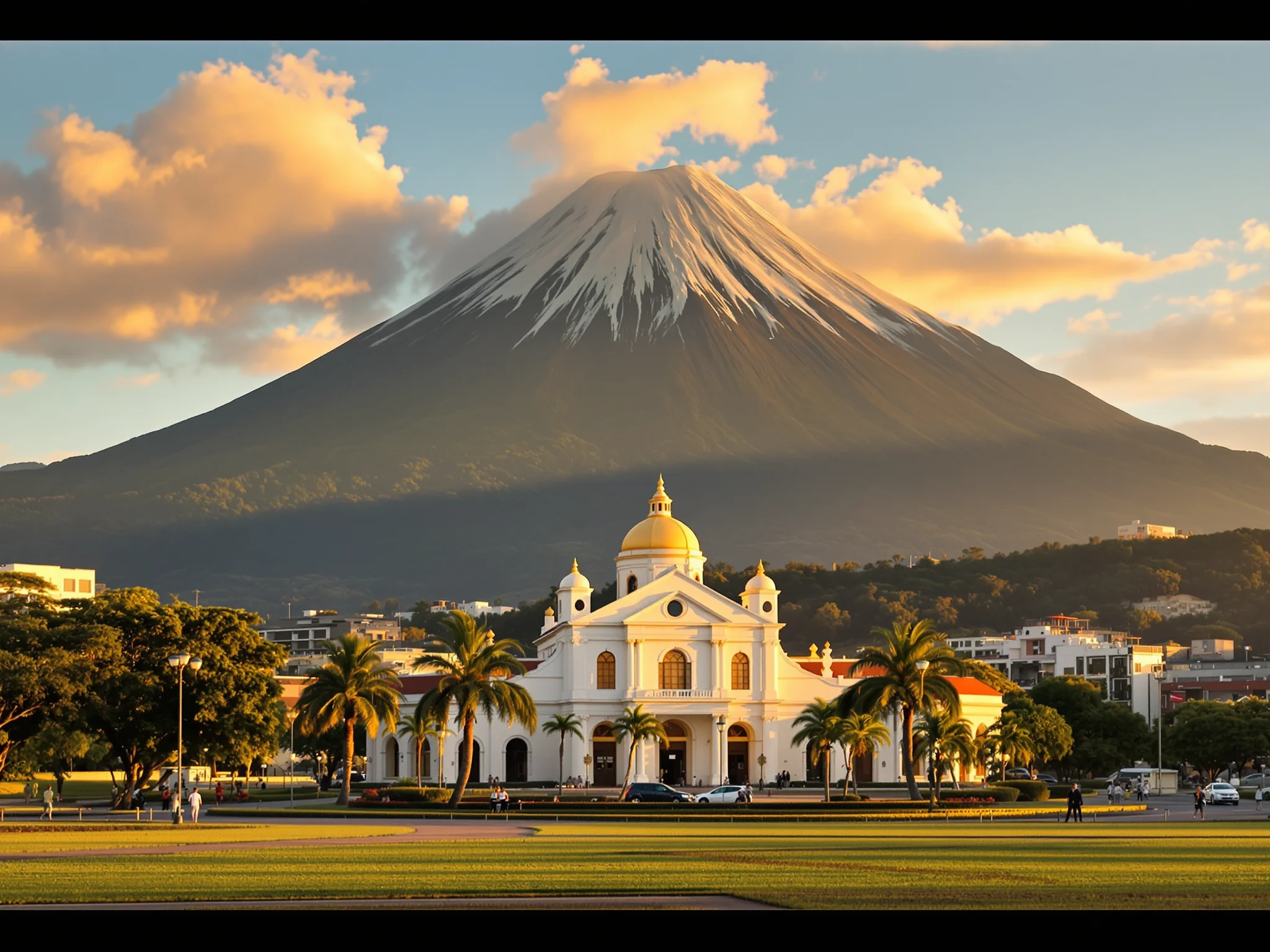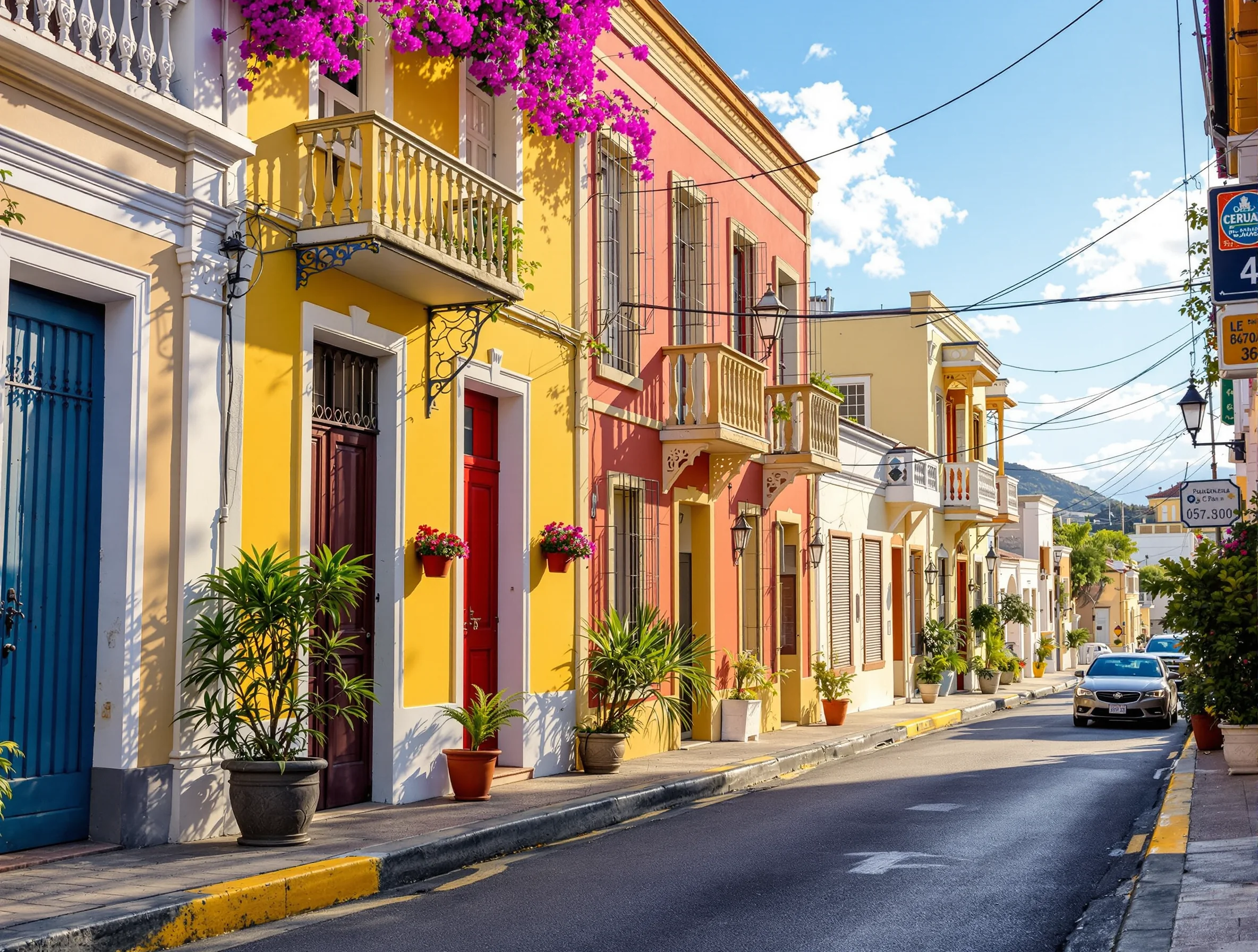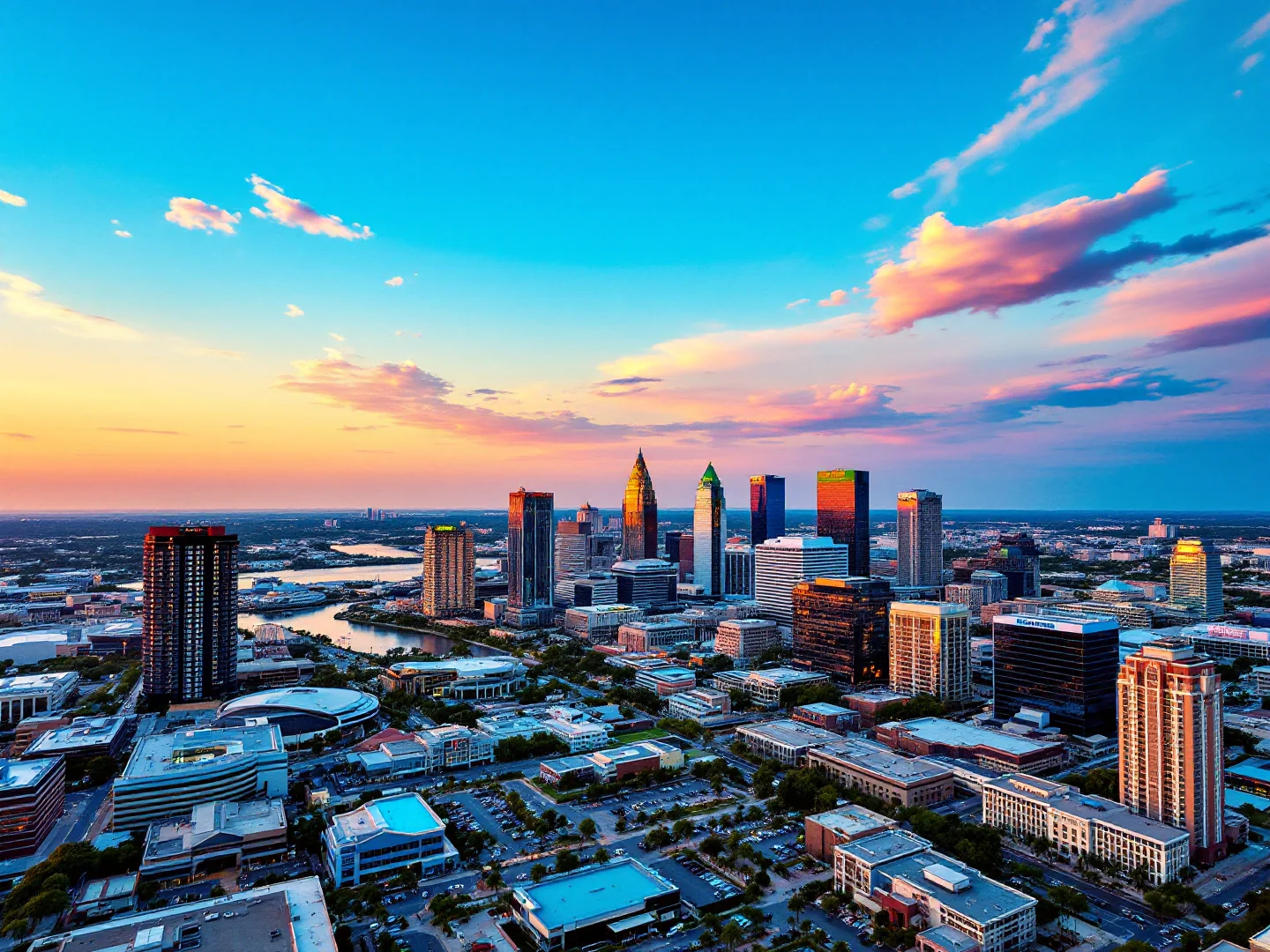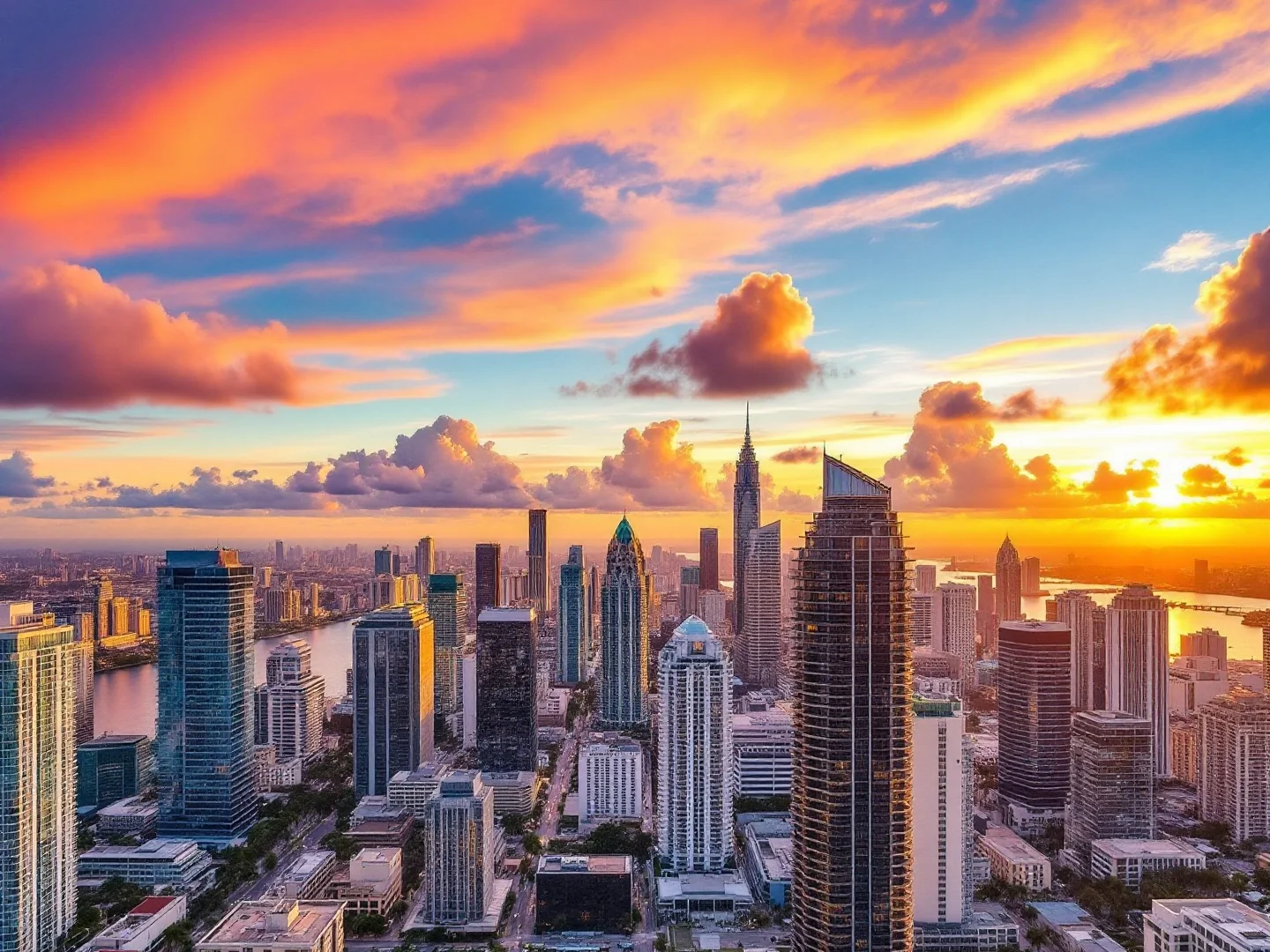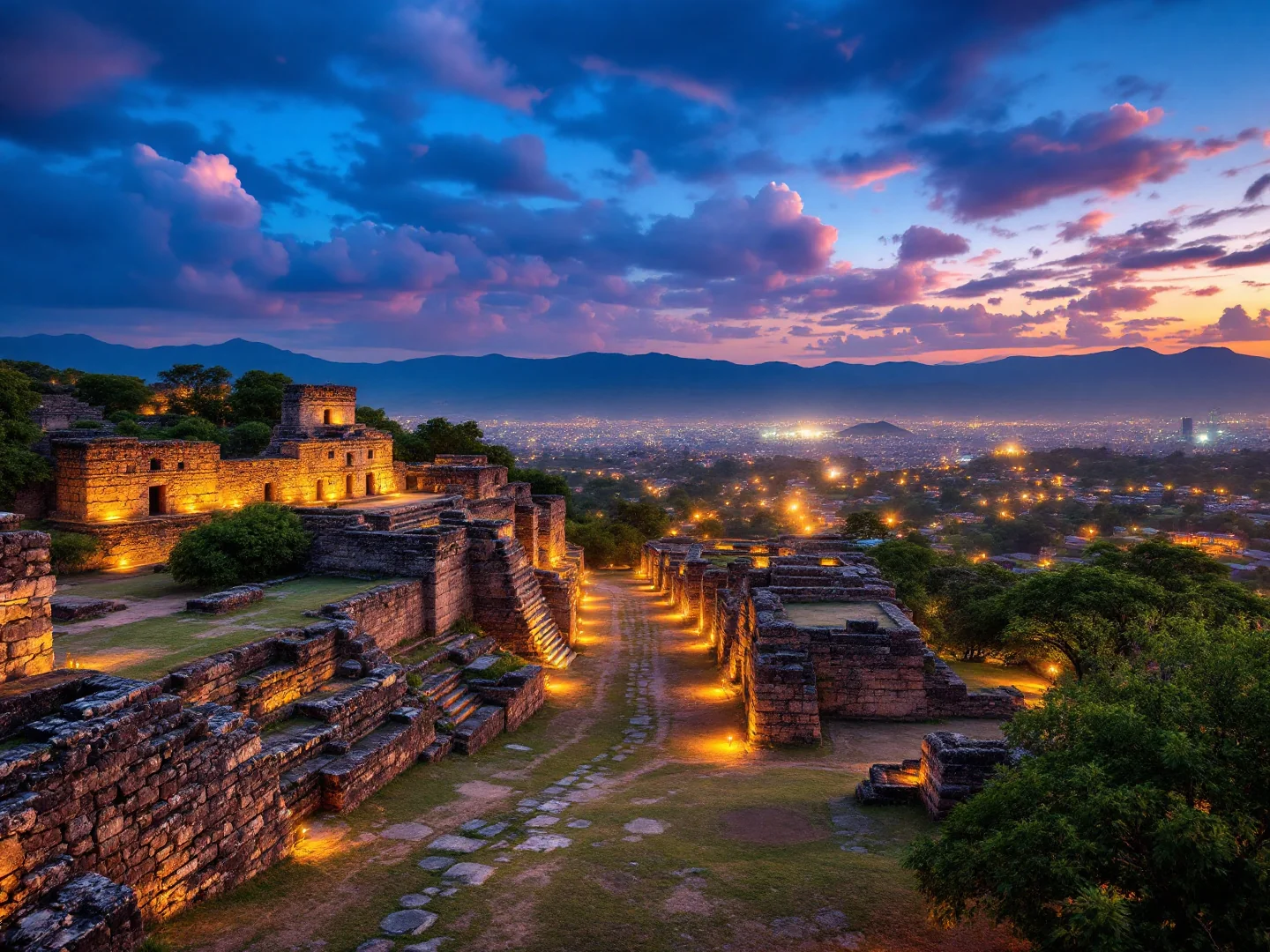Why Visit Havana?
Havana enchants as the Caribbean's time-capsule city where pastel-colored colonial buildings crumble romantically along narrow streets, 1950s Chevrolets and Cadillacs cruise as taxis (yank-tanks lovingly maintained since pre-embargo days), cigar smoke wafts from doorways where salsa rhythms pulse, and socialist propaganda murals declaring 'Viva la Revolución' contrast with nascent capitalism in paladares (private restaurants) serving mojitos and ropa vieja. Cuba's capital (pop. 2.1 million) froze in 1959 when Castro's revolution severed US ties, creating bizarre time-warp where Soviet-era Ladas share roads with horse carts, ration books persist alongside upscale restaurants, and heavy dollarization confuses visitors—officially only Cuban pesos (CUP) since 2021, but USD/EUR cash highly valued and many shops use MLC (freely convertible currency) cards.
Old Havana (Habana Vieja) concentrates UNESCO colonial splendor: Plaza de la Catedral's baroque cathedral, Plaza de Armas book market, Castillo de la Real Fuerza fortress, and endless photogenic streets where laundry hangs from balconies and kids play baseball in alleys. El Malecón, Havana's iconic 8km seawall promenade, hosts nightly gatherings where Habaneros socialize, waves crash over walls, fishermen cast lines, and sunset paints everything gold. Take classic car tours ($30–$50/hr) in restored convertibles, sip mojitos at Bodeguita del Medio (Hemingway's hangout—touristy but obligatory), and climb Capitolio dome for city views.
Vedado neighborhood offers modern Havana: Revolution Square with Che Guevara's iconic face on Ministry building, Tropicana cabaret show ($$$ but spectacular), Hotel Nacional's terrace mojitos, and Coppelia ice cream park (local institution—long queues but authentic). Yet Havana's soul lives in music: salsa, son, rumba pulse from Casa de la Música, Fábrica de Arte Cubano (FAC—factory-turned-art-space-nightclub), and informal neighborhood peñas. Daiquiris flow at El Floridita (another Hemingway spot), while rum tours at Havana Club Museum ($8) explain Cuba's national drink.
Day trips reach Viñales Valley (3hrs, tobacco farms and mogotes—limestone karst hills), or beach resorts east (Varadero 2hrs, Playas del Este 30min—locals' beaches). Cuba's challenges frustrate: internet limited and expensive, scams proliferate (jineteros offering 'authentic' experiences), bureaucracy thick, and supplies sporadic (restaurants run out of menu items, shops lack basics). Yet Havana seduces with resilience, warmth, and feeling like nowhere else on Earth.
With tourist card (visa, $25–$100 depending on source, now tied to electronic D'Viajeros registration), Cuban peso (CUP) as sole legal tender but heavy dollarization in practice, limited English outside tourism, cash-only economy (US credit cards don't work!), and costs higher than expected ($50–$100+/day with middling lodging), Havana delivers bucket-list experience requiring patience, humor, and fascination with the world's most famous socialist experiment clinging to ideals while adapting to reality.
What to Do
Colonial Havana
Old Havana (Habana Vieja)
UNESCO World Heritage colonial heart with four main plazas. Plaza de la Catedral features baroque cathedral, Plaza de Armas has a book market, Plaza Vieja showcases colonial architecture, and Plaza de San Francisco leads to the harbor. Wander narrow streets like Obispo and O'Reilly where colorful buildings crumble romantically and laundry hangs from balconies. Free to explore. Go early morning (7-9am) for best light and fewer crowds, or evening when locals come out.
El Capitolio
Cuba's former Capitol building (modeled after Washington DC), now home to the Cuban Academy of Sciences. Interior is stunning—marble halls, gilded ceilings, and a replica diamond marking Kilometer Zero. Guided tours currently cost around $22–$32 / US$20–$30 per person (card often preferred). Can climb dome for city views. Allow 1-2 hours. Tickets bought at office opposite building. Afternoon light is beautiful on the exterior for photos.
Castillo de la Real Fuerza
16th-century fortress (Cuba's oldest) with maritime museum. Moat, drawbridge, and La Giraldilla weather vane (symbol of Havana) on the tower. Entry about $3–$5 Less crowded than other sites. Takes 1 hour. Good morning visit—combine with Plaza de Armas book market next door.
Iconic Havana Experiences
Classic 1950s Car Rides
Havana's iconic pastel-colored Chevys, Cadillacs, and Buicks—'yank-tanks' frozen in time since pre-embargo days. Hire for photo tours ($30–$50/hour) or longer trips. Convertibles best for photos. Negotiate price before getting in. Most concentrate around Old Havana and Parque Central. Ride along the Malecón at sunset, through Vedado, and past Revolution Square. Touristy but genuinely fun and unique to Cuba.
El Malecón Promenade
Havana's iconic 8km seawall and seafront boulevard stretching from Old Havana to Vedado. Locals gather here at sunset to socialize, fish, and watch waves crash over the wall. Walk or drive the length—especially beautiful at golden hour. Free. Go late afternoon into evening (5-8pm) when it's most alive. Bring a bottle of rum from a shop and join the scene. Can get wet when waves are big!
Hemingway Trail
Follow Papa's footsteps: Bodeguita del Medio for mojitos (touristy but historic, walls covered in signatures), El Floridita for daiquiris ($5 'cradle of the daiquiri'), and Finca Vigía (his house-museum, 30 min south, $5 entry—can't enter house but peer through windows). Add Hotel Ambos Mundos (room 511 where he wrote). Half-day activity. Morning or afternoon. Literary pilgrimage essential for Hemingway fans.
Revolutionary & Cultural Havana
Revolution Square
Massive plaza with iconic Che Guevara mural on Ministry of Interior building and Camilo Cienfuegos on Ministry of Communications. José Martí Memorial tower in center (can climb for views, $2–$3). The site where Fidel gave speeches to millions. Takes 30 minutes unless you climb tower. Go morning for best photos—stark and impressive but somewhat barren. Combine with classic car tour through Vedado.
Live Salsa & Music Venues
Salsa, son, and rumba pulse through Havana nightly. Casa de la Música (two locations: Miramar and Centro) for serious salsa ($10–$20 cover, locals and tourists mix, dancing after 10pm). Fábrica de Arte Cubano (FAC) is coolest spot—factory-turned-art-space-nightclub Thursday-Sunday ($2–$5 galleries + live music + DJ). Callejón de Hamel for Afro-Cuban rumba Sunday noon (free, authentic). Tip musicians $1–$2
Museo de la Revolución
Cuban history from independence through Castro's revolution, housed in former Presidential Palace. Granma yacht (used in revolution) outside. Revolutionary perspective throughout. Official admission around 200 CUP for foreigners, but as of 2024 much of the main interior collection is closed for renovation—mainly the outdoor Granma Memorial and some exhibits are accessible. Check current status locally before planning a long visit. English labels limited—guide helps if sections are open.
Gallery
Travel Information
Getting There
- Airports: HAV
Best Time to Visit
November, December, January, February, March, April
Climate: Warm
Weather by Month
| Month | High | Low | Rainy days | Condition |
|---|---|---|---|---|
| January | 27°C | 20°C | 5 | Excellent (best) |
| February | 28°C | 21°C | 12 | Excellent (best) |
| March | 29°C | 21°C | 2 | Excellent (best) |
| April | 32°C | 24°C | 8 | Excellent (best) |
| May | 30°C | 23°C | 21 | Wet |
| June | 31°C | 25°C | 22 | Wet |
| July | 32°C | 25°C | 21 | Wet |
| August | 32°C | 25°C | 22 | Wet |
| September | 31°C | 25°C | 22 | Wet |
| October | 30°C | 24°C | 24 | Wet |
| November | 28°C | 23°C | 17 | Excellent (best) |
| December | 26°C | 20°C | 6 | Excellent (best) |
Weather data: Open-Meteo Archive (2020-2024) • Open-Meteo.com (CC BY 4.0) • Historical avg. 2020–2024
Budget
Excludes flights
Visa Requirements
Visa required
💡 🌍 Traveler Tip (November 2025): November 2025 is perfect for visiting Havana!
Practical Information
Getting There
José Martí International Airport (HAV) is 15km southwest. Official airport taxis $25–$30 (30-45min, agree price before leaving—meter scams common). Classic car taxis negotiate ($20–$40). Colectivos (shared taxis) cheaper but rare at airport. Many casas arrange pickup ($20–$25). International flights via Madrid, Paris, Amsterdam. From US: American, JetBlue, Delta (limited, book early). Most connect through Mexico, Panama, Canada. Americans must travel under 1 of 12 approved categories—tourism not allowed but 'Support for Cuban People' covers most activities.
Getting Around
Walking: Old Havana and Vedado compact and walkable. Taxis: classic cars ($30–$50/hr for tours), yellow official taxis ($2–$5 start + meter, but often negotiate flat rate—agree before entering), or colectivos (shared taxis, cheap but fixed routes). Bici-taxis (bicycle taxis): short trips, negotiate ($2–$5). Coco-taxis (yellow coconut-shaped): touristy, fun, same price as taxis. Buses: confusing, crowded, mostly for locals. Vintage car tours essential experience. Viazul buses for long-distance to Viñales, Trinidad (book ahead online). Rental cars possible ($60–$100/day) but fuel scarce, insurance complicated, not necessary for Havana.
Money & Payments
Cuba officially uses only the Cuban Peso (CUP) since 2021, but the economy is heavily dollarized with many shops using MLC (freely convertible currency) cards. Official exchange rate is about 120 CUP per US$1 and 130 CUP per $1 but street rates are much higher. Bring ALL CASH you'll need (euros, GBP, CAD, or USD). Exchange at CADECA or banks (long lines, bureaucracy), or use informal exchanges for better rates. US credit cards don't work, ATMs unreliable. Budget in cash before arrival. Tipping: 10% restaurants, $1–$2 for small services, $5–$10 for tour guides.
Language
Spanish is official. Very limited English outside upscale hotels and tour guides. Translation apps essential (but internet limited!). Young people in tourism have basic English. Learn: Hola, Gracias, ¿Cuánto cuesta?, La cuenta por favor. Communication challenging—basic Spanish very helpful.
Cultural Tips
Cash ONLY: bring everything you need, count change carefully (shortchanging common). Internet: expensive and limited—buy ETECSA cards ($1–$5/hr) to access wifi hotspots (parks, hotels), slow speeds. Don't drink tap water. Scams: persistent jineteros offer tours, casas, taxis (inflated prices)—politely but firmly decline, book accommodations advance. Rations: locals receive rationed food (libreta), tourists pay market prices. Photos: ask permission, especially for classic cars (some charge). Salsa: take classes ($10–$15), clubs after 10pm (Casa de la Música $10–$20 cover). Machismo: women face catcalls (ignore). Revolution: locals have complex feelings—avoid political debates. Hemingway trail: touristy but fun (Bodeguita del Medio, El Floridita, Finca Vigía museum). Music everywhere: tip musicians ($1–$2). Paladares (private restaurants) better quality than state places. Power outages occasional. Cuban time: relaxed pace, patience essential. Resilience and humor define Habaneros—embrace the chaos!
Perfect 4-Day Havana Itinerary
Day 1: Old Havana Colonial Heart
Day 2: Classic Cars & Revolution
Day 3: Hemingway & Beaches
Day 4: Markets & Culture
Where to Stay in Havana
Old Havana (Habana Vieja)
Best for: Colonial center, UNESCO sites, plazas, museums, tourist heart, walkable, beautiful decay
Vedado
Best for: Modern Havana, Revolution Square, Hotel Nacional, Malecón, nightlife, residential, 1950s architecture
Centro Havana
Best for: Real Havana, gritty, crumbling buildings, locals, authentic but rougher, connects Old Havana to Vedado
Miramar
Best for: Upscale residential, embassies, mansions, restaurants, safer but less character, west of Vedado
Frequently Asked Questions
Do I need a visa to visit Cuba?
What is the best time to visit Havana?
How much does a trip to Havana cost per day?
Can I use credit cards in Cuba?
Is Havana safe for tourists?
Popular Activities
Top-rated tours and experiences in Havana
Ready to Visit Havana?
Book your flights, accommodation, and activities

